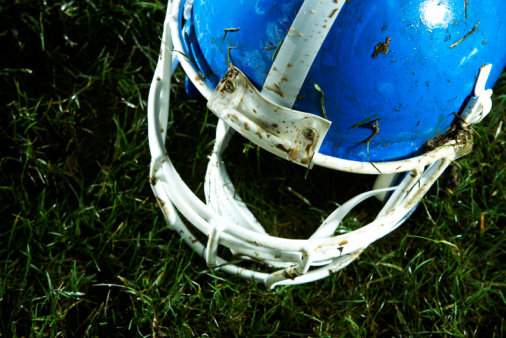
Recent research led by neurosurgeon Dr. Jonathan A. Forbes of Vanderbilt University reveals new insights into helmet design. Dr. Forbes believes the research may provoke new designs that do a better job protecting athletes from serious bleeding brain injuries. Although the press has given much attention to concussions, less information is available on brain hemorrhage.
Brain Bleeding a Serious Danger
Bleeding in the brain is a serious risk to football players. More than 350 players have died from this type of brain injury in the last 65 years.Although those numbers have been steadily declining, the medical community remains concerned about these deadly injuries. One of the study’s most alarming findings is a higher date of death from brain bleeding in teen and young adult football players. In professional football, the instance is very low.
Rotational Acceleration and Brain Bleeding
Dr. Forbes studied a subset of collisions involving rotational acceleration. This type of impact occurs when a force pushes the head to the side, such as a boxer receiving a blow in a fight. Today’s helmet safety tests look at translational acceleration or front-to-back and side-to-side motions of the head.
This study shows death from brain bleeding is more likely to occur when rotational acceleration is involved. Dr. Forbes explained, “These events of catastrophic head injury strongly correlate with peak levels of rotational acceleration.” He envisions a future in which helmets are tested and designed for rotational acceleration in addition to traditional methods.
Design May Not Be the Answer
What the research fails to address, however, are the reasons for the disparity of injury rates between amateurs and professionals. Because helmet designs are similar across the spectrum of players, there must be some other factor causing the problem. One likely reason NFL athletes see rarer instances of brain bleeding is the advanced professional training they receive. Younger players are still developing the skills needed to prevent brain injury.
According to a position paper by the Michigan Department of Community Health and the Michigan Fitness Foundation, players can minimize the risk of injury by participating in conditioning programs, mastering football techniques, and following the rules of the game.[1] However, young players receive less training and practice than NFL players do.
Another factor may be the softer emphasis on strength training in college and high school programs when compared to professional football. Younger athletes do not have the same caliber of trainers and training equipment that is available in the NFL. They also lack the type of equipment needed to give their bodies more strength and flexibility, components important to reducing all types of sports injuries.
Contact Us
If someone you care about suffered a traumatic brain injury and you have questions about your rights, contact our office. We have experienced brain injury attorneys on staff who will meet with you at no charge to discuss your case. We can help you understand your options and decide if a brain injury lawsuit is right for you.


